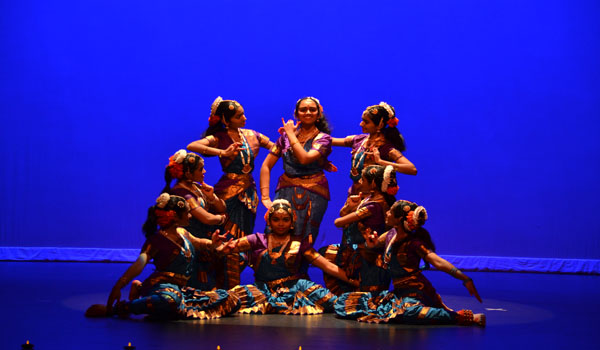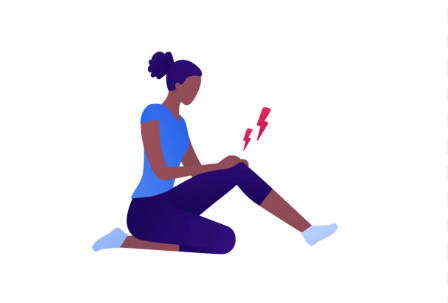Young classical Indian dancers enter the stage with multi-piece costumes, and make-up. They make their way across the stage, and position themselves before the lights turn on, each holding their place until the music begins.
These young ladies will perform a Bharatanatyam piece.
Junior Sachi Koulgi, an Indian classical dancer, has learned Bharatanatyam for the past nine years, going to Bethesda, Maryland every Sunday for her lessons.
“I started Bharatanatyam when I was seven years old,” said Koulgi. “It is extremely important [to me] because it not only gives me something to be passionate about, but it also allows me to be different and active at the same time.”
Bharatanatyam is a classical dance form originating from Tamil Nadu, a South Indian state. Devadasis, women who devoted their lives as servants to deities, performed these dances in temples. Near the end of the 19th century, this art form threatened to die out. As the British ruled India, they shunted the Devadasis to the lower class and saw them as prostitutes. After the revival of Bharatanatyam in the 1930s, it became a greatly respected and popular dance.
Students learn to use facial expressions, hand gestures, and foot movements to tell stories to their audience.
Another dancer has been learning a different type of Indian classical dance, Kathak.
“I’ve been doing Kathak for 10 years now and so it has been, and still is, a very big part of my life,” said junior Manali Sontakke. “It’s given me the basis of dance that helps me to learn other styles of choreography. It’s taught me a lot about self-discipline.”
Kathak can be traced back to its dawning in Uttar Pradesh, a North Indian state. It was brought about by nomadic bards, storytellers who performed mythological tales using facial expressions, hand gestures, and fast footwork. When the Moguls took over, Kathak was performed in royal courts. It is currently a popular form of classical dance.
Senior Sonali Kanitkar has recently taken up a third Indian dance form called Kuchipudi.
“I decided to learn Kuchipudi because I wanted to go back to Indian dance but did not want to do Kathak,” said Kanitkar. “I also saw the Kuchipudi dancers perform and I thought it was very beautiful.”
Kuchipudi originated in Andhra Pradesh in South India, and acquired its name from a secluded village. Brahmins, who began dancing with stage rites, performed. Following the Brahmins, the characters introduced themselves by means of a Dharvu, a short dance.
Each dancer feels that their type of dance holds its own uniqueness to it.
“Bharatanatyam is unique because it involves elements like expression,” said Koulgi. “It is a physical activity and a very intricate art form. It basically is a type of dance that allows you to tell stories and emotion through hand gestures and expression, which not all dances do.”
“Kathak was just a set footwork mostly and it focused more on the hands,” said Kanitkar. “With Kuchipudi I feel like you use and focus on every part of you, from your facial expressions to your hands to your footwork and your bending.”



















